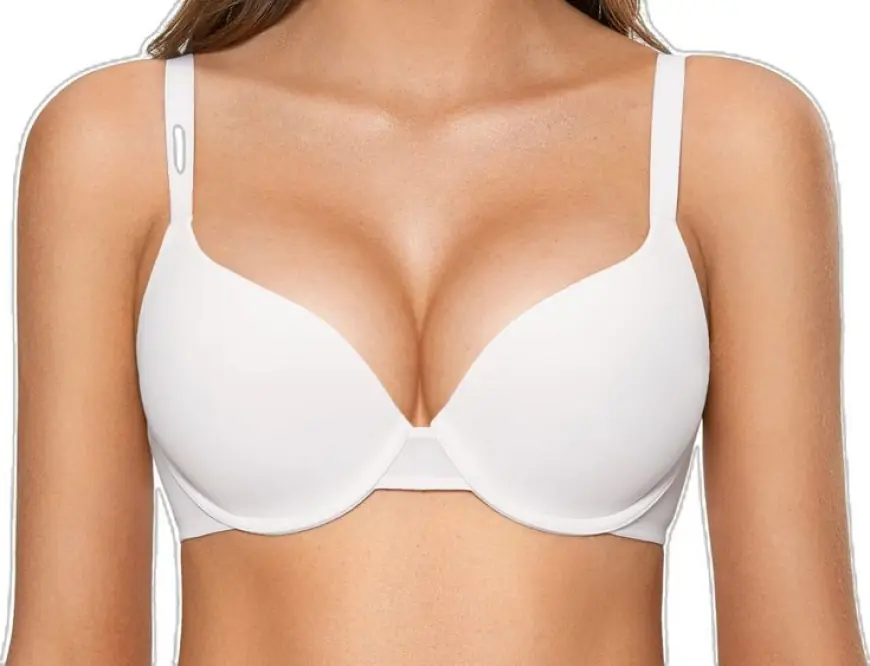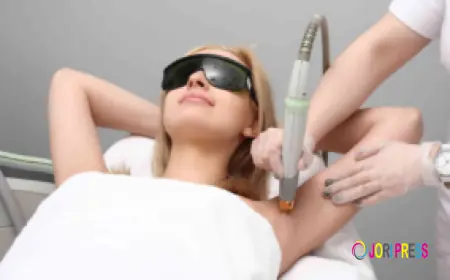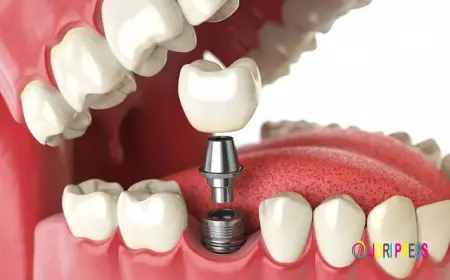Riyadh: Understanding Breast Augmentation Scars?
For many individuals considering Breast augmentation in Riyadh, Jeddah, and Saudi Arabia, the journey is about more than just achieving a desired aesthetic outcome; it's about reclaiming confidence and feeling comfortable in their own skin.

For many individuals considering Breast augmentation in Riyadh, Jeddah, and Saudi Arabia (تجميل الصدر في الرياض), the journey is about more than just achieving a desired aesthetic outcome; it's about reclaiming confidence and feeling comfortable in their own skin. As with any surgical procedure, understanding every aspect, including the inevitable presence of scars, is a vital part of the preparation process. While the idea of scars might initially cause concern, advancements in surgical techniques and post-operative care have made it possible to minimize their visibility, allowing patients to enjoy their new contours with peace of mind. This comprehensive guide aims to shed light on what to expect regarding scars, from their formation to their long-term appearance, ensuring you are fully informed for your transformation.
The Desire for Breast Augmentation
Breast augmentation is a highly sought-after cosmetic procedure that involves increasing breast size and enhancing their shape, typically through the insertion of implants. Reasons for seeking this procedure are varied and deeply personal, ranging from a desire for fuller breasts, restoring volume lost after pregnancy or weight loss, correcting asymmetry, to simply achieving a more balanced figure. The profound impact it can have on a woman's self-esteem and body image makes it a transformative experience.
The Inevitable Presence of Scars
It's a common misconception that breast augmentation can be entirely "scarless." While some techniques aim to hide incisions in discreet areas, surgery inherently involves making incisions in the skin, which will result in scars. The goal, however, is to make these scars as inconspicuous as possible. Understanding the types of incisions, the healing process, and effective scar management strategies is key to achieving the best possible aesthetic outcome.
The Science of Healing: How Scars Form and Mature
Scars are a natural part of the body's healing process after any injury or incision. When the skin is cut, the body initiates a complex repair mechanism to close the wound and restore its integrity. This process involves several phases, each contributing to the final appearance of the scar. Knowing about this biological journey can help manage expectations and emphasize the importance of diligent post-operative care for minimizing visible marks after Breast augmentation in Riyadh, Jeddah, and Saudi Arabia.
The Stages of Scar Formation
The healing process for a surgical incision unfolds in distinct stages:
-
Inflammatory Phase (Days 1-5): Immediately after surgery, the body sends blood and immune cells to the incision site to prevent infection and begin the cleaning process. The area may appear red, swollen, and slightly tender.
-
Proliferative Phase (Days 5-3 Weeks): During this phase, new tissue, primarily collagen, is produced to bridge the wound. This collagen is initially disorganized, leading to a raised, red, and sometimes itchy scar.
-
Remodeling Phase (3 Weeks - 1 Year or More): This is the longest phase, where the newly formed collagen fibers reorganize and strengthen. The scar begins to flatten, soften, and fade in color, gradually becoming less noticeable. The final appearance of the scar can take up to 1-2 years to fully mature.
Factors Influencing Scar Appearance
Several factors can influence how a scar looks, including:
-
Genetics: Individual genetic predisposition plays a significant role in scar healing. Some individuals are more prone to developing hypertrophic or keloid scars.
-
Incision Location: The placement of the incision directly impacts visibility. Surgeons strategically choose locations that can be easily concealed.
-
Surgical Technique: The skill of the surgeon, precision of incisions, and meticulous closure techniques are critical for minimizing scar prominence.
-
Post-Operative Care: Adhering to post-operative instructions, including wound care and scar management, is paramount for optimal healing.
-
Patient Health and Lifestyle: Factors like nutrition, hydration, smoking status, and overall health can affect the body's ability to heal efficiently.
Incision Options: Strategic Placement for Discretion
One of the most important discussions with your surgeon before Breast augmentation in Riyadh, Jeddah, and Saudi Arabia will revolve around incision placement. Surgeons employ various techniques, each with its own advantages regarding access to the breast tissue and the ultimate visibility of the scar. The goal is always to choose the approach that best suits your anatomy, desired outcome, and lifestyle, ensuring the resulting marks are as discreet as possible.
The Inframammary Incision
-
Location: This is the most common incision, made in the natural crease (inframammary fold) directly beneath the breast.
-
Advantages: It offers the surgeon excellent direct visibility and control during implant placement, regardless of implant type or size. The resulting scar is well-hidden within the breast crease when standing and often blends seamlessly.
-
Considerations: While generally discreet, it may be more visible when lying down or wearing very revealing swimwear.
The Periareolar Incision
-
Location: This incision is made around the edge of the areola (the darker skin surrounding the nipple), usually along the border between the pigmented and non-pigmented skin.
-
Advantages: The scar is concealed within the natural color transition of the areola, often making it very difficult to detect once healed.
-
Considerations: This approach may be limited by the size of the areola and can sometimes be associated with a higher risk of changes in nipple sensation or potential issues with breastfeeding. It provides less direct visualization for the surgeon, which might influence implant placement in some cases.
The Transaxillary Incision
-
Location: This incision is made in the armpit (axilla). The implants are then inserted through a tunnel created from the armpit to the breast pocket.
-
Advantages: This technique leaves no visible scars on the breast itself, which is a significant appeal for many patients.
-
Considerations: It is often considered a more technically challenging approach for the surgeon. There may be a higher risk of implant malposition, and it can be more difficult to perform if future revision surgery is needed. The scar, while not on the breast, will be present in the armpit.
Other Incision Variations
Less common incision types include the transumbilical breast augmentation (TUBA), where the incision is made through the belly button, and the transaxillary endoscopic technique, which utilizes an endoscope for visualization. These are specialized approaches that a surgeon might discuss in specific circumstances.
Nurturing Your Scars: Post-Operative Care for Optimal Healing
The journey to minimal scarring doesn't end in the operating room. Diligent and consistent post-operative scar care is crucial for optimizing the healing process and encouraging the scars to fade as much as possible. Your surgeon will provide specific instructions tailored to your individual case, but there are general principles that apply to all breast augmentation scar management.
Immediate Post-Operative Care
In the initial days and weeks following surgery, focus on:
-
Keeping Incisions Clean and Dry: Follow your surgeon's instructions on how to clean the incision sites. This typically involves gentle washing with mild soap and water and patting dry.
-
Wearing Supportive Garments: A surgical bra or compression garment will be recommended. This support helps reduce swelling, provides comfort, and stabilizes the implants, which can indirectly aid scar healing by reducing tension on the incisions.
-
Avoiding Strain: Refrain from strenuous activities, heavy lifting, or any movements that could stretch or put tension on your incisions. This is crucial for preventing the scars from widening or becoming more prominent.
-
Protecting from Sun Exposure: Fresh scars are highly susceptible to hyperpigmentation (darkening) when exposed to ultraviolet (UV) light. Keep your scars covered or use a high-SPF sunscreen when outdoors.
Long-Term Scar Management
Once the incisions have fully closed and any dressings are removed (usually a few weeks post-op), you can begin more active scar management:
-
Silicone-Based Products: Silicone sheets or gels are widely recommended by plastic surgeons due to their proven effectiveness in improving scar appearance. They work by hydrating the scar tissue and providing gentle pressure, which helps to flatten and soften the scar while reducing redness. These should be worn consistently for several weeks to months.
-
Gentle Massage: Once your surgeon gives approval, gentle massage of the scars can help break down collagen fibers and improve blood circulation, leading to softer, flatter scars. Use a gentle, circular motion with a moisturizing cream or oil.
-
Moisturization: Keeping the scar hydrated with a good quality, fragrance-free moisturizer can improve its texture and flexibility.
-
Healthy Lifestyle: Continue to eat a nutritious diet rich in vitamins (especially Vitamin C and E) and zinc, which are essential for skin repair. Stay well-hydrated and avoid smoking, as nicotine can impair blood flow and hinder healing.
Consistency is key with scar management. The more diligently you follow these recommendations, the better your chances of achieving a subtle, well-healed scar.
Anticipating Outcomes: What to Expect from Your Scars
Understanding that scar healing is a journey, not a destination, is important. While you cannot completely erase a scar, you can significantly influence its final appearance. Having realistic expectations about how your scars will look over time is crucial for patient satisfaction after Breast augmentation in Riyadh, Jeddah, and Saudi Arabia.
The Evolution of Scars
-
Initial Appearance (First Few Weeks/Months): Scars will likely appear red, slightly raised, and firm. This is a normal part of the healing process as collagen is actively being laid down. Some itching or tenderness is also common.
-
Maturation (Several Months to 1-2 Years): Over time, the scars will gradually begin to flatten, soften, and fade in color, often turning a lighter pink or even white, becoming much less conspicuous. The texture will also improve, becoming smoother.
-
Long-Term Appearance: While scars will always be present, they typically become fine, faint lines that are difficult to notice unless closely inspected. Their ultimate visibility depends on individual healing, incision choice, and diligent care.
When to Seek Further Consultation
In some cases, scars may not heal as ideally as desired. If you experience any of the following, consult your surgeon:
-
Excessive Redness, Itching, or Pain: This could indicate an infection or an abnormal healing response.
-
Widening or Spreading Scars: If your scars appear to be stretching beyond the incision line.
-
Raised, Thickened, or Discolored Scars (Hypertrophic or Keloid): These types of scars are an exaggerated healing response and may require specific treatments.
-
Signs of Infection: Such as pus, fever, or increasing redness and warmth around the incision.
There are various treatments available for problematic scars, including silicone therapy, steroid injections, laser treatments, or even scar revision surgery, which can be discussed if needed.
Frequently Asked Questions
Understanding the nuances of scar healing is a common concern for individuals embarking on their breast augmentation journey. Here are some frequently asked questions related to breast augmentation scars in Saudi Arabia.
Inquiring Minds Want to Know: Can a breast augmentation be completely scarless?
It is important to clarify that no surgical procedure that involves an incision can be truly "scarless." Any time the skin is cut, a scar will form as part of the natural healing process. However, modern breast augmentation techniques and advanced post-operative care aim to make these scars as minimal and inconspicuous as possible. Surgeons strategically place incisions in hidden areas, and with diligent care, the resulting marks typically fade significantly over time, becoming very difficult to notice.
Many Ask: How long do breast augmentation scars take to fully fade?
The fading process for breast augmentation scars is gradual and varies from person to person. While the initial healing phase takes a few weeks, where redness and swelling subside, the maturation and fading of the scar can take anywhere from six months to two years, and sometimes even longer. During this period, the scar will soften, flatten, and lighten in color. Consistency with scar management techniques, such as using silicone products and sun protection, can significantly influence the speed and extent of fading.
Curious About: Does scar location impact future mammograms or breast health checks?
The location of breast augmentation scars, particularly periareolar incisions, can sometimes affect the ease of mammograms or other breast imaging. However, radiologists are accustomed to imaging breasts with implants and scars. It's crucial to inform your imaging technician and physician about your breast augmentation and the incision type. While implants can sometimes obscure a small amount of breast tissue, a skilled technician can use special views to ensure comprehensive imaging. Scars themselves typically do not pose a significant health risk or interfere with the detection of breast health concerns, but their presence is a part of your medical history to be noted.
A Common Concern: Can I prevent keloid or hypertrophic scars after breast augmentation?
While you cannot entirely prevent keloid or hypertrophic scarring if you are genetically predisposed to them, you can significantly minimize their likelihood and severity. Choosing a highly skilled surgeon who uses meticulous surgical techniques is paramount. Following all post-operative care instructions diligently, especially regarding wound care, tension avoidance, and consistent use of silicone-based scar management products, is crucial. If you have a known history of abnormal scarring, discuss this openly with your surgeon, as they may recommend specific preventative measures or early interventions to manage scar development.
What's Your Reaction?
 Like
0
Like
0
 Dislike
0
Dislike
0
 Love
0
Love
0
 Funny
0
Funny
0
 Angry
0
Angry
0
 Sad
0
Sad
0
 Wow
0
Wow
0
















































